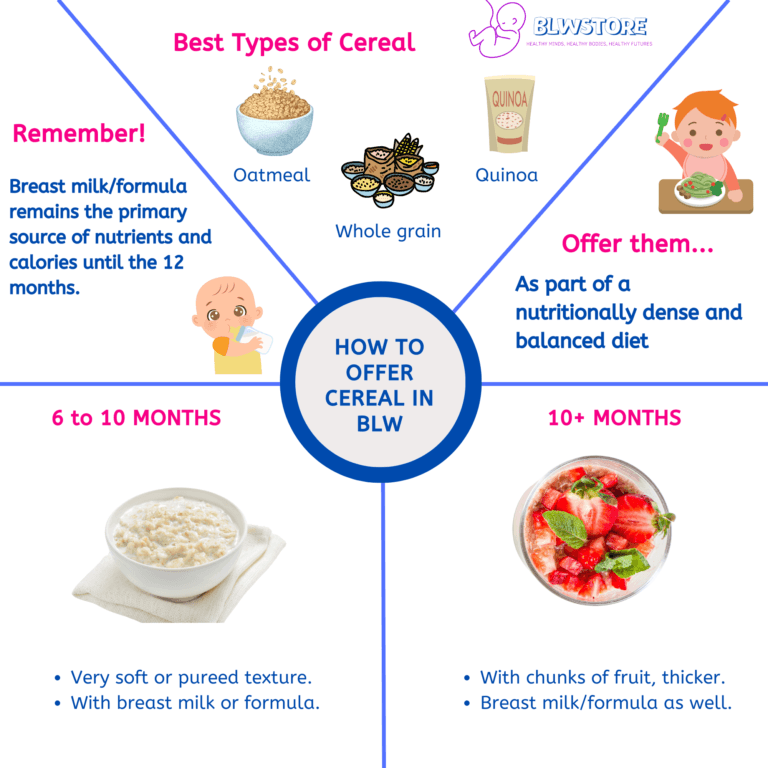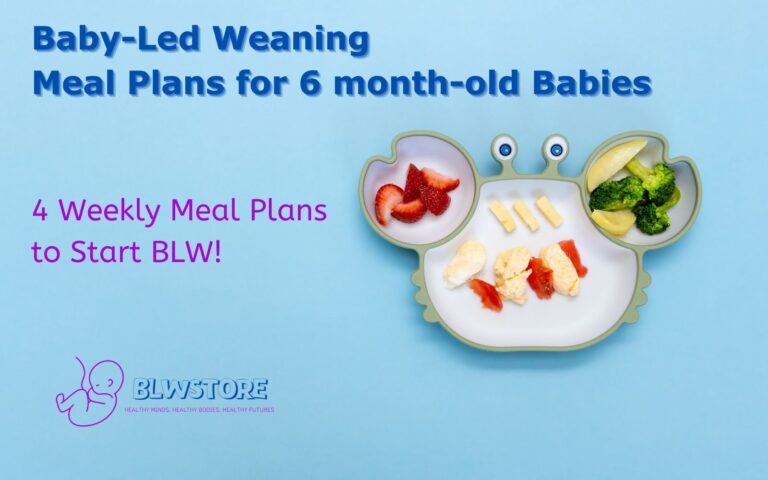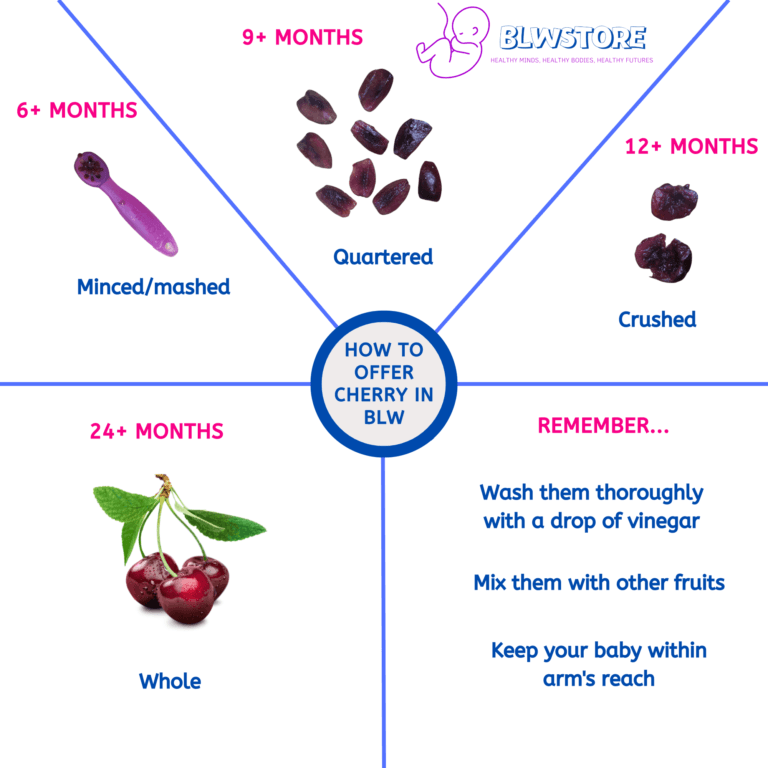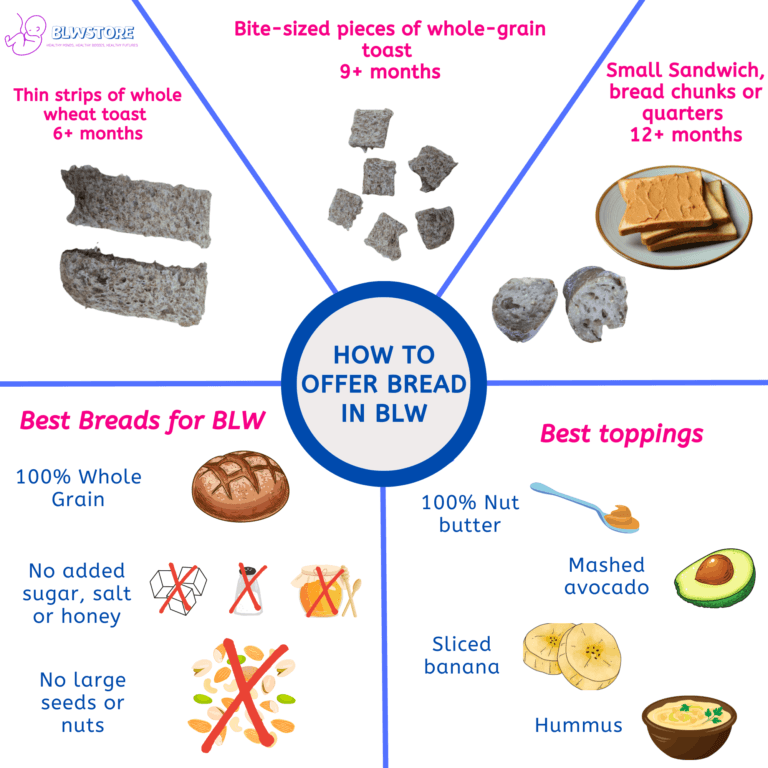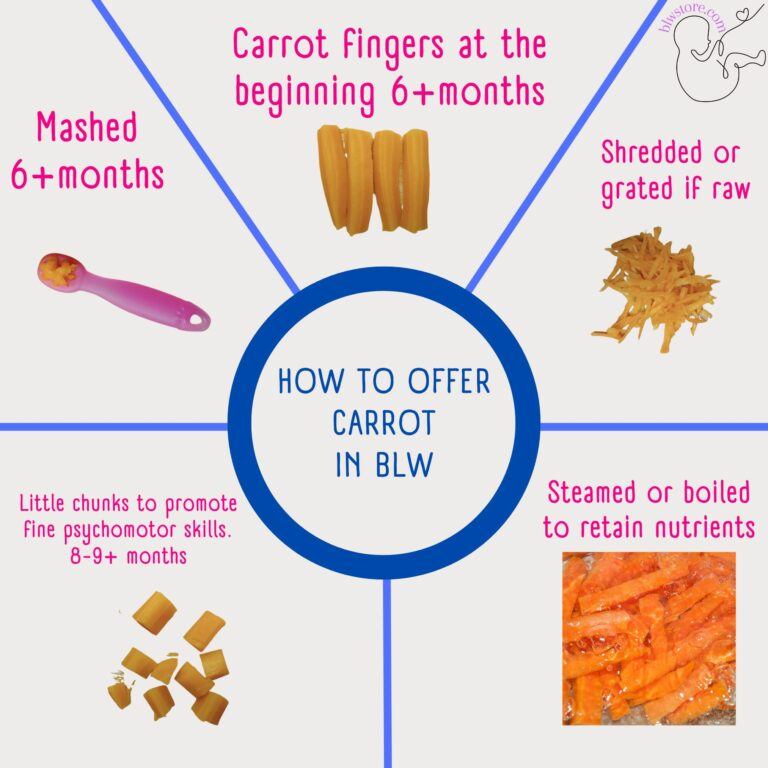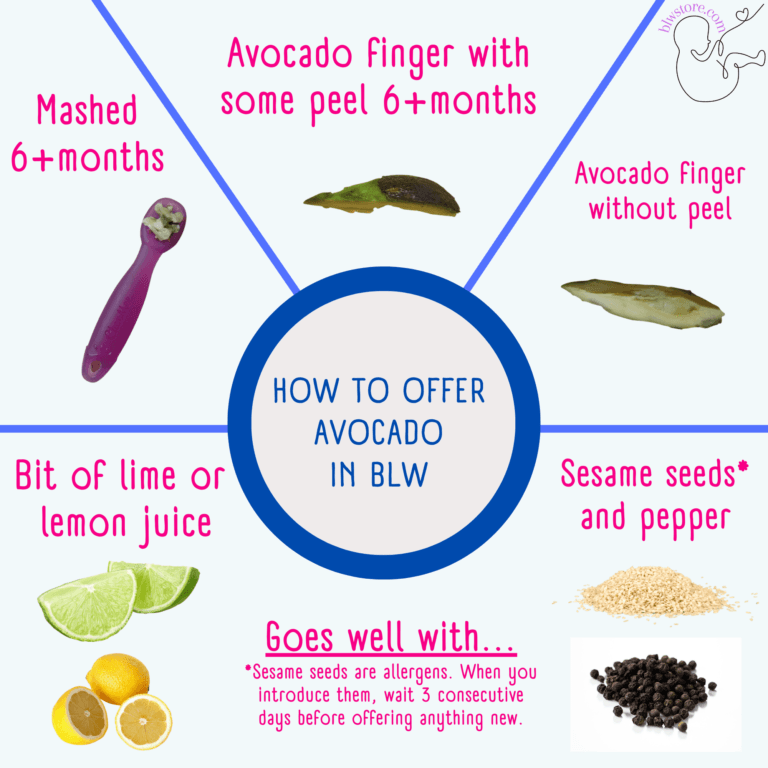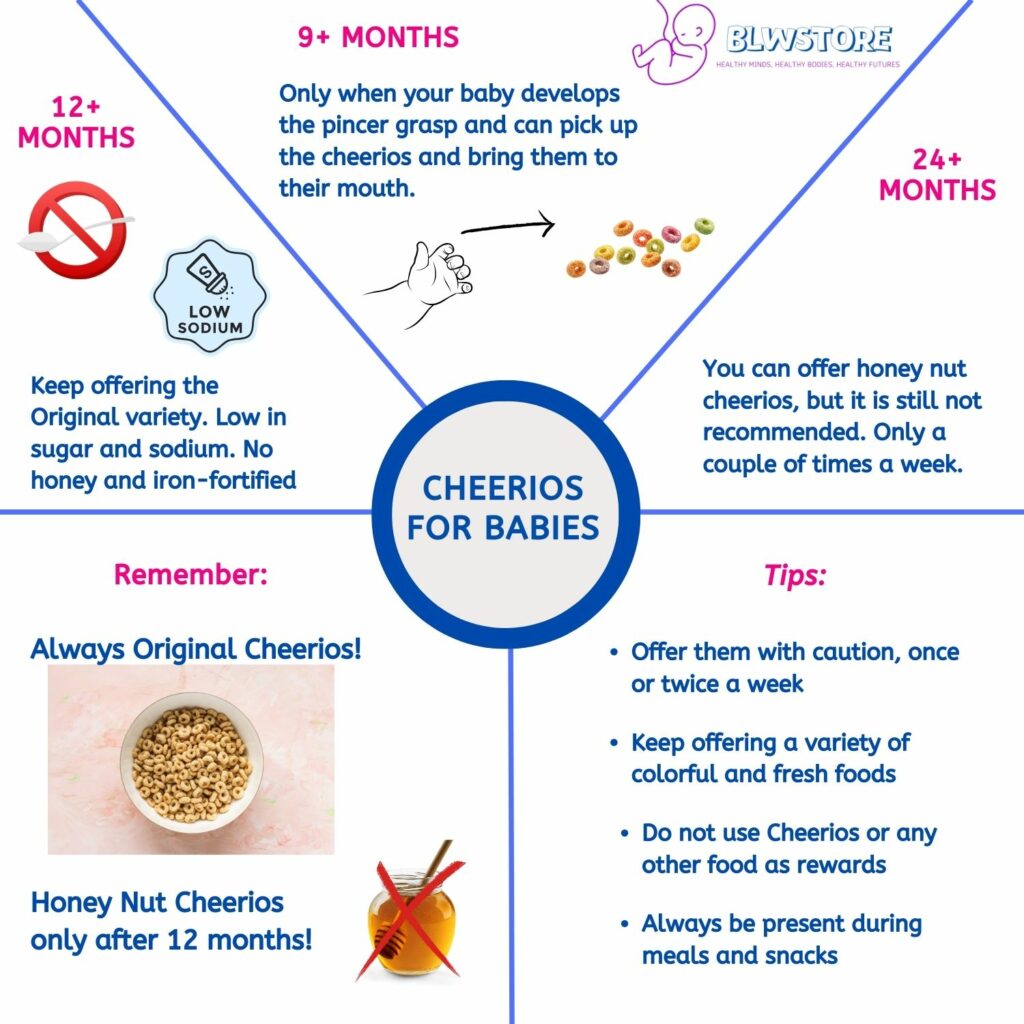
Key Takeaways
- Introduction to Solid Foods: Babies can start enjoying honey-free Cheerios at around 9 months old, which is generally when they learn to pick up small pieces of food.
- Nutritional Benefits: Original Cheerios have low sugar and sodium, and high iron content.
- Variety Choice: While Original Cheerios are preferred for babies due to nutritional content, honey nut varieties should be reserved for those over one year due to potential allergy risks and higher sugar and salt content.
- Frequency of Consumption: Cheerios can be offered as a snack a few times a week to help babies transition to solid foods. Pairing Cheerios with a diverse range of fruits and veggies is recommended for balanced nutrition.
- Safety Consideration: Although Cheerios are not widely recognized as a choking hazard and even help reduce such risks due to their unique shape, vigilant supervision is essential while babies consume them.
- Allergenic Concerns: The allergenic potential varies with different Cheerio varieties, hence reading labels to understand ingredient composition is crucial, particularly for those with known food allergies.
When Can Babies Have Cheerios?
Babies can start to munch on honey-free Cheerios at around 9 months old. This is when most babies have learned to pick up small pieces of food with their fingers. These skills are vital for self-feeding and help them grow into healthy eaters.
Cheerios dissolve very easily in the mouth, making it an appropriate food option for young ones learning to feed themselves. Honey nut varieties should be given only after one year due to their potential allergy risk.
Offering softer foods before moving on to something like Cheerios is preferable.
Thanks to Deck Gumasing for sharing!
Are Cheerios Good For Babies?
Cheerios are good for babies, but only the Original variety. They are low in sugar and filled with iron. This cereal can give your baby a healthy start to the day. The whole-grain oats in Cheerios help keep your baby full and happy.
Babies need fiber, too. Cheerios offer this much-needed nutrient to help their tiny stomachs work well.
Original Cheerios vs Honey-Nut Cheerios: Nutritional Comparison Table
| Nutrient | Original Cheerios (1 cup) | Honey Nut Cheerios (1 cup) |
|---|---|---|
| Calories | 93.3 | 140 |
| Total Fat (g) | 1.7 | 2 |
| Saturated Fat (g) | 0.3 | 0 |
| Trans Fat (g) | 0 | 0 |
| Polyunsaturated Fat (g) | 0.7 | 0.5 |
| Monounsaturated Fat (g) | 0.7 | 0.5 |
| Cholesterol (mg) | 0 | 0 |
| Sodium (mg) | 126.7 | 210 |
| Total Carbohydrate (g) | 19.3 | 30 |
| Dietary Fiber (g) | 2.7 | 3 |
| Soluble Fiber (g) | 1.3 | 1 |
| Total Sugars (g) | 1.3 | 12 |
| Added Sugars (g) | 0.7 | 12 |
| Protein | 3 | 3 |
| Vitamin D (mcg) | 1.3 | 2 |
| Calcium (mg) | 86.7 | 130 |
| Iron (mg) | 8.4 | 3.6 |
| Potassium (mg) | 166.7 | 150 |
| Folic Acid (mcg) | 30 | 45 |
Original Cheerios have less sugar, less sodium and more iron.
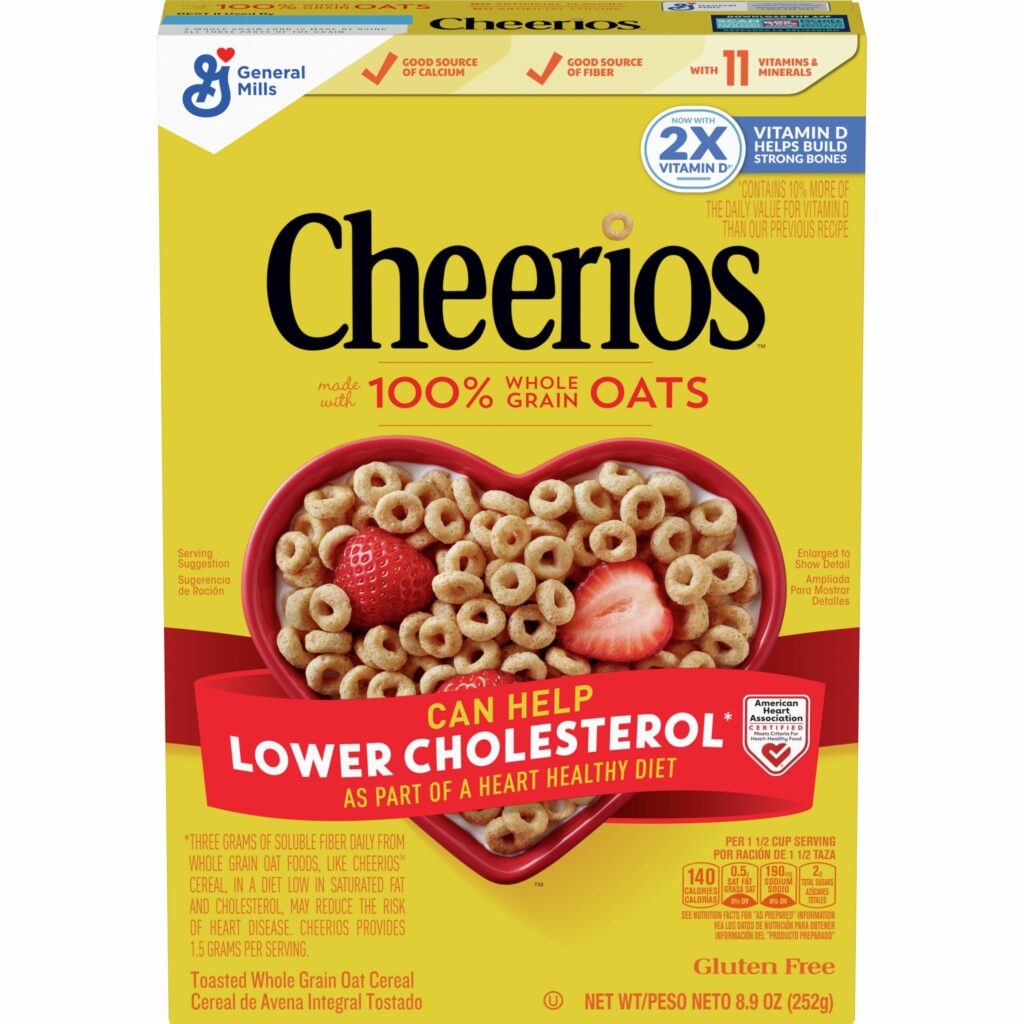
What are Cheerios Made Of?
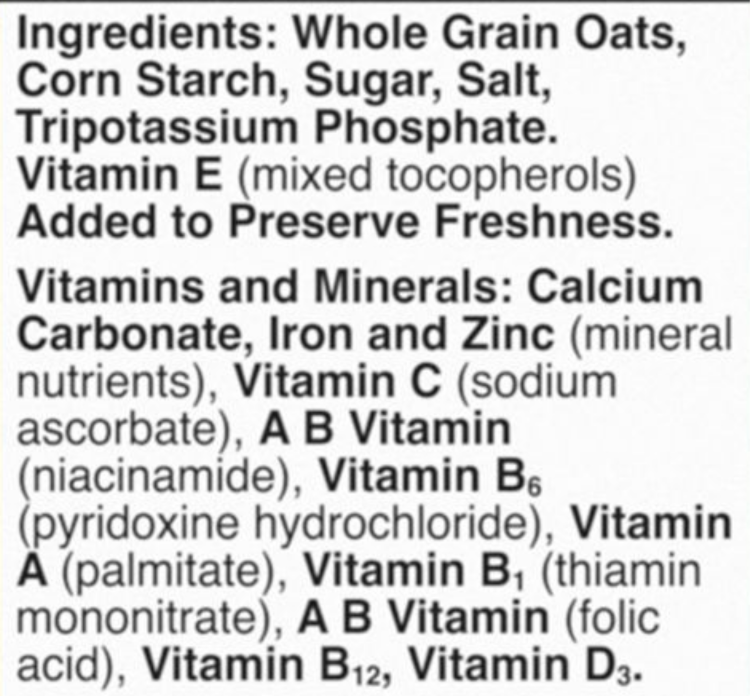
Cheerios are made of whole-grain oats. Whole-grain oats are quite healthy for your baby. Your baby gets a lot of good stuff from these grains. Cornstarch is also in Cheerios. It makes them nice and thick.
Sugar, salt, tripotassium phosphate, and Vitamin E are in there too. But don’t worry! There’s not a lot of sugar in Cheerios. They have less sugar than other cereal options. Some moms choose organic Cheerios for their babies.
How Often Should Babies Eat Cheerios?
Babies can eat Cheerios as a snack. They should not have them too often, though. A few times a week is good. This helps babies get used to eating solid foods. Always watch your baby while they eat Cheerios.
This makes sure they are safe from choking.
You want to pair Cheerios with other healthy foods for meals and snacks. It’s good to mix in fruits and veggies too. Balance is the key when feeding your child! Keep meal times fun and full of different tastes.
Our Favorite Cheerios Recipe: Cheerios Pancakes
Ingredients:
- 1 cup of Original Cheerios
- 1 ripe banana
- 2 large eggs
- 1/2 cup of all-purpose flour
- 1/2 cup of milk (any type will do – almond, oat, cow’s, etc.)
- 1 teaspoon of baking powder
- 1/2 teaspoon of vanilla extract
- A pinch of salt
- Butter or oil for frying
- Optional toppings: fresh berries, yogurt
Instructions:
- Crush the Cheerios: Start by placing them in a zip-lock bag and rolling pin over them until they become a fine crumb. Alternatively, a quick blitz in a food processor should do the trick.
- Prepare the batter: Mash the ripe banana until smooth in a large mixing bowl. Crack the eggs into the bowl, add milk, and whisk them together until well combined.
- Add the dry ingredients: Now, stir in the crushed Cheerios, flour, baking powder, vanilla extract, and a pinch of salt (only for 12+ months babies) to the banana-egg mixture. Mix well to create a slightly lumpy batter. Don’t overmix; a few lumps are pancake-perfect!
- Cook the pancakes: Heat a non-stick skillet or griddle over medium heat and lightly grease it with butter or oil. For each pancake, pour a quarter cup of batter onto the skillet. Cook until bubbles form on the surface, then flip and cook for 1-2 minutes or until golden brown and well cooked through (the mixture has eggs so make sure they are well done)
- Serve hot: Stack your Cheerios pancakes high and adorn them with your favorite toppings (we love a bit of plain yogurt or crushed berries)
Are Cheerios a Choking Hazard?
Cheerios are not known to be a big choking risk for babies. They start eating them at about 9 months old. This is when they can pick up small pieces of food with their fingers. Babies should always eat under grown-ups’ watch.
The cereal’s unique O shape helps to bring down the chance of choking. Plus, Cheerios dissolve quite easily in the mouth. Still, it’s key that your baby is chewing and swallowing right to keep from choking on these or any foods.
Are Cheerios Allergenic?
The potential for allergic reactions largely depends on the specific variety. Cheerios offers a range of flavors and types, some of which may contain common allergens such as peanuts, tree nuts, and wheat. It’s always advisable to scrutinize the label to understand the ingredient list, as product recipes can sometimes change.
As with the introduction of any new food, especially in a child’s diet, starting with a small quantity and monitoring for any adverse reactions is a prudent approach.
Last Words
The transition to solids is a very important milestone for babies, and Original Cheerios can be a good complement if accompanied by a variety of fresh and colorful foods.
These cereals can help develop self-feeding skills while offering fiber and iron to baby’s digestive system.
Remember to always be by your baby’s side while eating at all times and consult your pediatrician when needed.
Happy feeding!
We’re Maria and Alberto, a married couple and educators who are nutrition enthusiasts. Even before we had kids, we were already crazy about nutrition.
We’d read scientific articles, watch videos from nutritionists, and spend hours listening to nutrition podcasts.
Today, we continue doing this, but in a different way, as we’ve learned to sift through the noise and trends. Nutrition, like any other field of knowledge, the more you read and learn, the more you develop a comprehensive understanding of reality, and that’s what has happened to us.
Before having our first child, we focused on learning everything we could about child nutrition, using the same techniques we had already employed, backed by our extensive knowledge in nutrition.
Our mission is to help other parents with their children’s nutrition, to help them become the best versions of themselves.
If we are what we eat and drink, which is absolutely true, let’s do it right!


